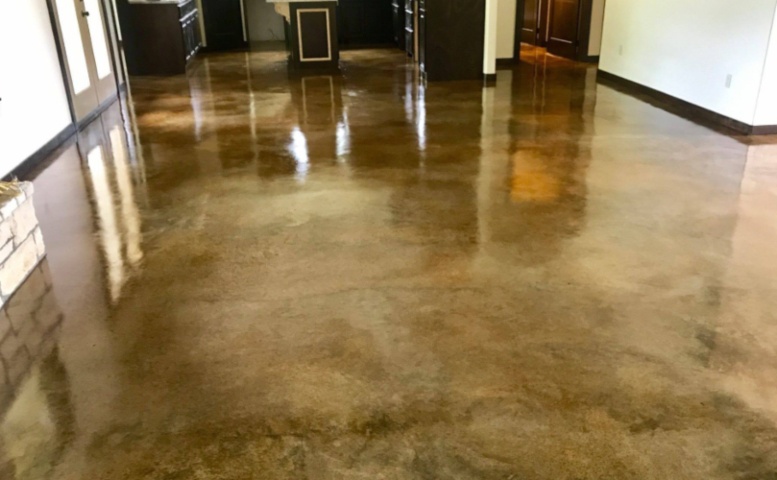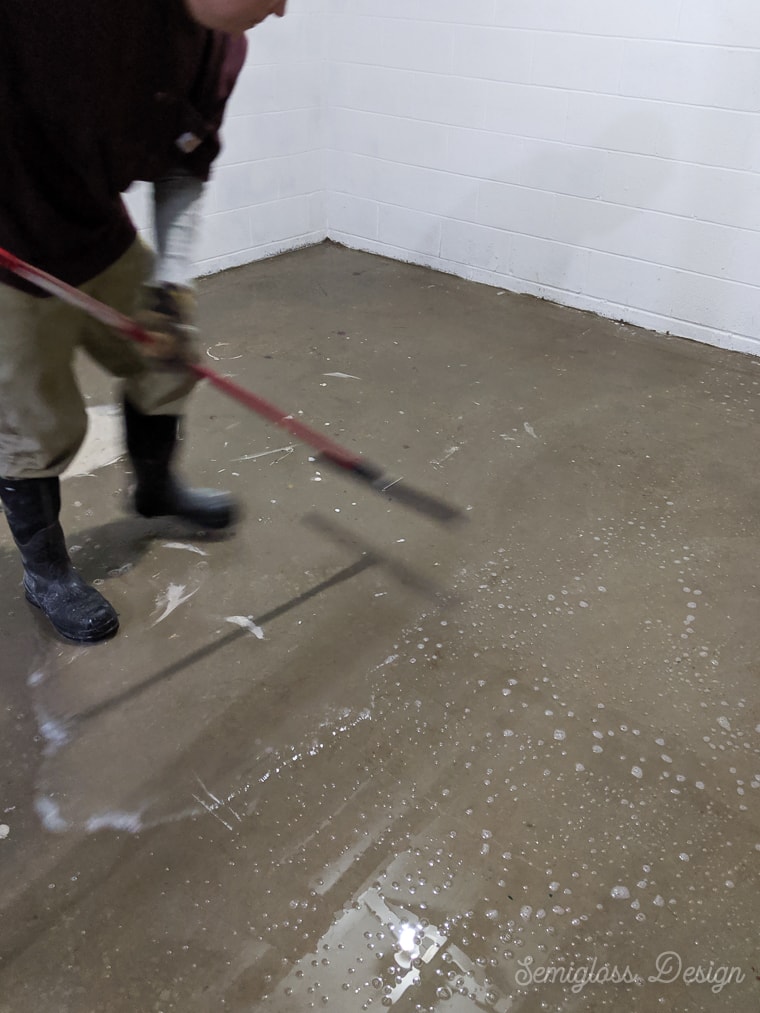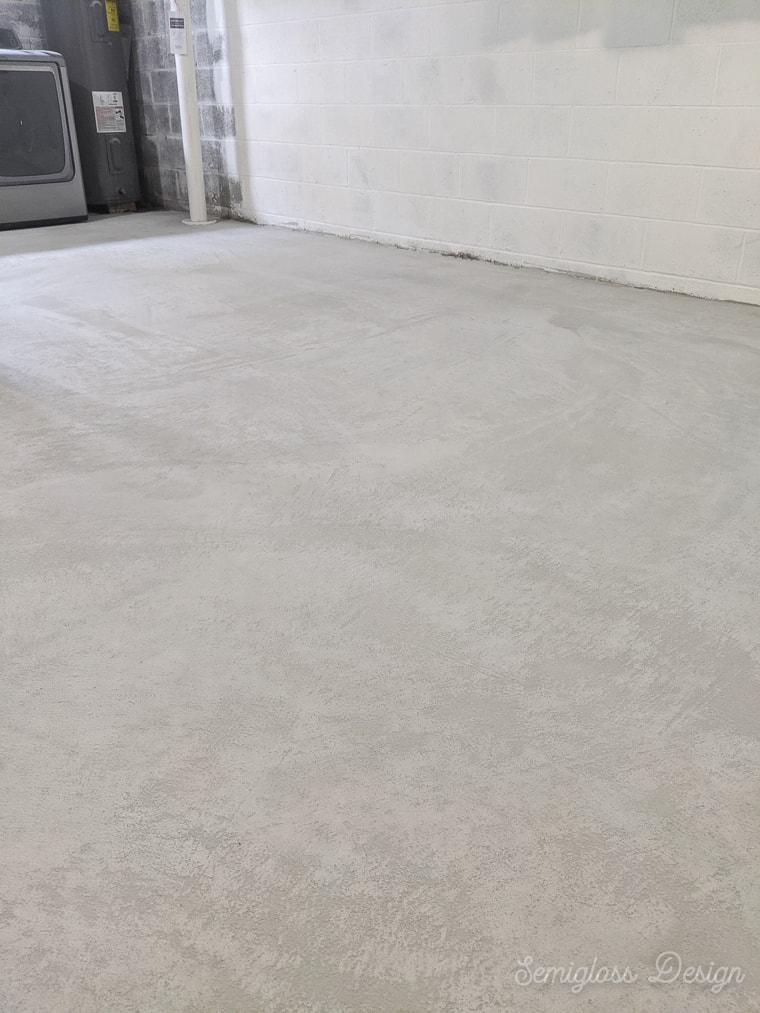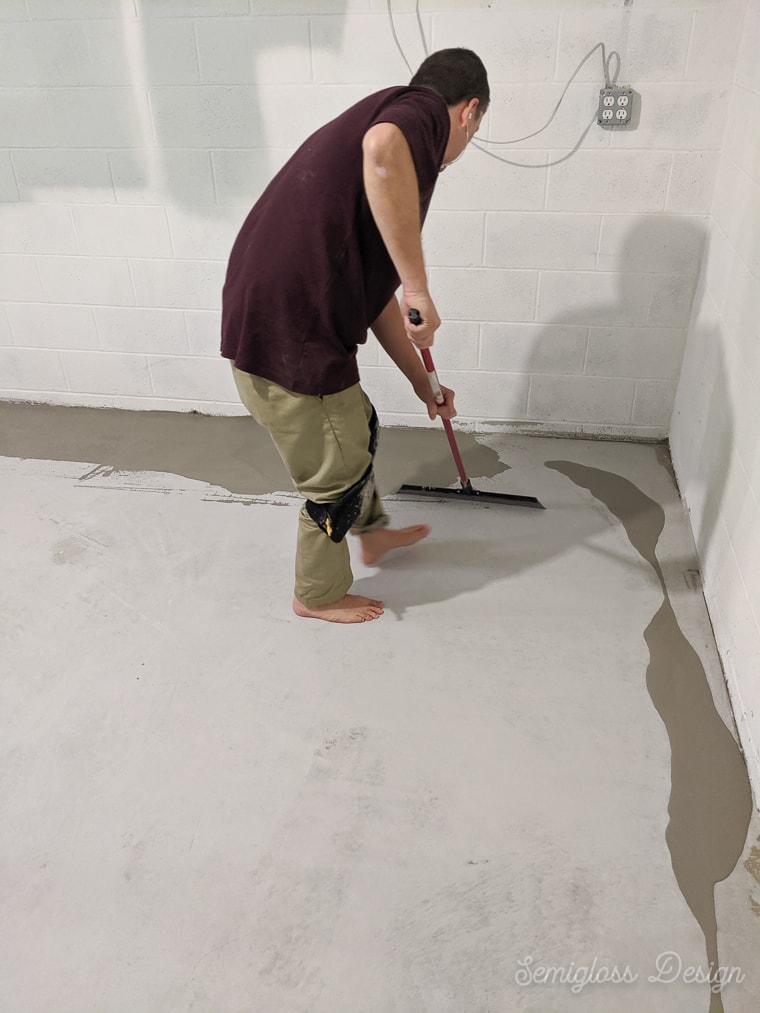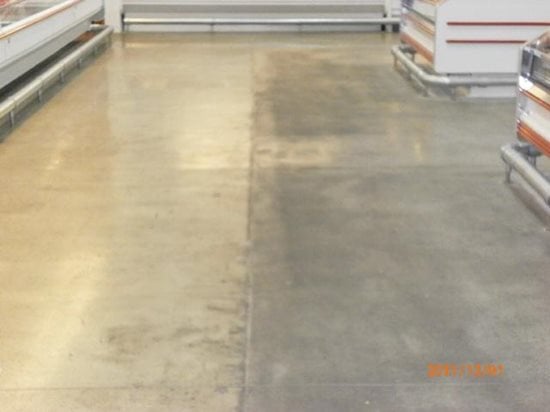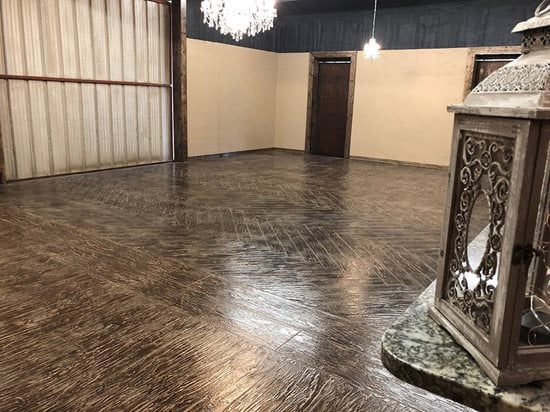Why Redoing Concrete Floors is Worth the Effort
If you’re considering redoing your concrete floors, you might be asking yourself, “Is it worth all the effort?” I asked myself the same question before tackling my floor renovation. After completing the project, I can confidently say that yes, it’s worth it. Concrete floors are often an overlooked part of home improvement, but giving them a makeover can completely transform the look and feel of your space. Let me share with you some key reasons why redoing your concrete floors is not just worth the effort, but also a smart investment in your home.
- Enhances the Aesthetic Appeal: Redoing your concrete floors can instantly elevate the overall look of your home. Whether your floors are worn, cracked, or simply outdated, redoing them can give your space a fresh, modern appearance. You can opt for sleek, polished concrete, textured designs, or even stained finishes to match your style. In my experience, the difference between old, dull concrete and newly resurfaced floors is night and day.
- Increases Property Value: If you’re thinking long-term, redoing concrete floors can significantly increase the value of your home. High-quality concrete flooring is durable and attractive, which can be a huge selling point for potential buyers. When I redid my floors, I immediately noticed how much more sophisticated the space felt, and I knew that potential future buyers would appreciate the upgrade too.
- Improves Durability and Longevity: One of the biggest benefits of redoing concrete floors is the improvement in durability. Concrete is already known for its toughness, but over time, wear and tear can weaken the surface. By resurfacing or refinishing your floors, you’re giving them a new lease on life. A fresh layer of concrete or a protective coating can make your floors more resistant to future damage, extending their lifespan by many years.
- Cost-Effective Solution: Compared to other flooring options like hardwood or tile, redoing concrete floors is surprisingly cost-effective. Rather than tearing out old floors and starting from scratch, you can often work with what you already have. When I did my floors, I was pleasantly surprised by how affordable the materials and labor were, especially compared to more extensive renovations.
- Customizable to Your Style: Redoing your concrete floors gives you the chance to get creative. You’re not limited to a single look—there are tons of ways to customize your floors. Whether you want to add color with staining, create a unique texture with stamping, or go for a polished, glossy finish, there are endless possibilities. This was one of my favorite parts of the process: choosing a design that perfectly complemented my home’s style.
- Low Maintenance: One of the biggest perks of concrete flooring is how low maintenance it is once the redo is complete. A fresh concrete surface is resistant to stains, moisture, and scratches, meaning less time spent cleaning and repairing over the years. After I finished redoing my floors, I noticed how much easier it was to maintain their pristine condition with just occasional sweeping and mopping.
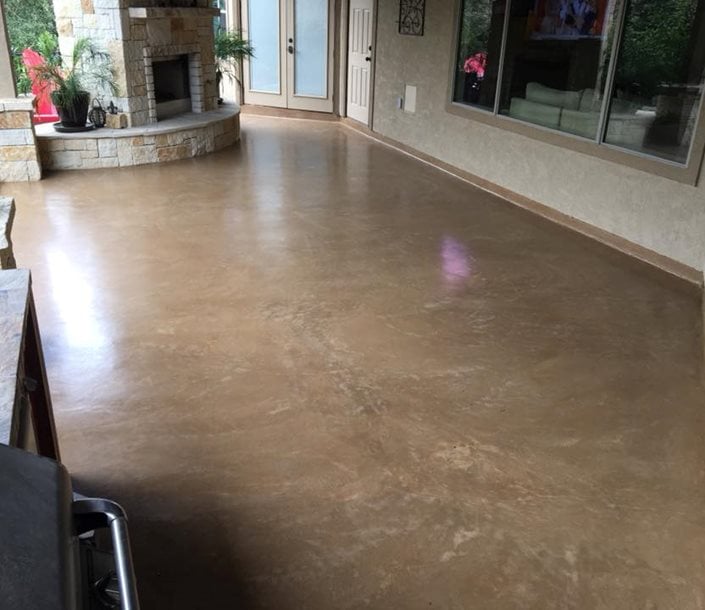
Assessing the Condition of Your Existing Concrete Floors
Before jumping into a concrete floor redo, it’s essential to assess the current condition of your floors. Trust me, knowing exactly what you’re working with will save you time, money, and frustration down the line. I’ve learned that taking the time to evaluate the floor’s state helps determine the best course of action—whether it’s resurfacing, repairing, or a complete replacement. Here’s how to go about assessing your concrete floors like a pro.
Look for Cracks and Surface Damage
The first step is to do a thorough visual inspection of your concrete floors. Look for cracks, chips, or uneven areas. Small hairline cracks might just be cosmetic, but larger cracks can indicate structural issues. When I assessed my floors, I discovered a few areas where the concrete had chipped away, which helped me decide that resurfacing was the best option. Make sure to check the entire floor, as damage may not be immediately obvious.
Check for Moisture Problems
Moisture is one of the biggest threats to concrete floors, especially in basements or areas below ground level. You can easily check for moisture by taping a square of plastic wrap to the floor and leaving it for 24 hours. If you see condensation under the plastic, it’s a sign that moisture is coming through the concrete. In my case, I found that one area of my basement had a moisture issue that I needed to address before moving forward with the redo.
Evaluate the Level of Wear and Tear
Consider how worn down your concrete floors are. Are they simply dull, or are there signs of more serious wear like pitting or erosion? Sometimes, concrete can look bad because it’s dirty or has accumulated years of grime, while other times, the wear is more severe. When I looked at my floors, I realized that some of the “damage” was just built-up dirt that could be easily cleaned off, while other parts needed a more thorough resurfacing.
Test the Floor’s Structural Integrity
The strength of your concrete is key to deciding how to proceed with your floor redo. A simple way to test the integrity of the concrete is by tapping on it with a hammer. If you hear hollow sounds, it could mean that the concrete is weak or deteriorating underneath the surface. When I did this, I found one section where the concrete was weaker, which meant I needed to reinforce that area before resurfacing.
Assess Levelness and Slope
Uneven concrete floors can pose problems during the redo process. Use a level to check if your floors have any noticeable slopes or uneven spots. Small imperfections can usually be corrected with resurfacing, but more significant slopes may require leveling before proceeding. In my home, I discovered a slight slope in one room that I had to fix to ensure the new concrete finish would look flawless.
Determine the Scope of Repairs Needed
After completing your assessment, you’ll have a good idea of the overall condition of your floors. This will help you determine whether you need simple resurfacing or if more extensive repairs are required. In my case, I had a mix of small cracks, a moisture issue, and some uneven spots, which informed my decision to do both resurfacing and minor repairs.
Preparing Your Concrete Floors for a Makeover
Once you’ve assessed the condition of your concrete floors, the next step is preparing them for the makeover. Trust me, this is a step you don’t want to skip or rush through. Proper preparation ensures that your new floor finish will bond well and last for years to come. I’ve made the mistake of skimping on preparation before, and it cost me more time and money to fix things later. To avoid that, here’s a detailed guide on how to properly prepare your floors for a stunning redo.
Clear and Clean the Surface
The first thing you’ll need to do is clear the space of any furniture, rugs, or debris. You want a clean, uncluttered surface to work with. After that, give the floor a thorough cleaning. Use a broom or vacuum to remove dust and dirt, and then mop the surface with water and a mild detergent to get rid of any grime. When I prepped my floors, I was surprised by how much dirt had accumulated, even though they didn’t look that bad initially.
Repair Cracks and Holes
Once the floor is clean, it’s time to fix any cracks or holes you noticed during your assessment. Use a concrete patching compound to fill in small cracks, making sure to smooth them out for an even surface. For larger cracks, you may need to use a special crack filler or reinforcement material. I found that taking the time to patch up imperfections before resurfacing made a huge difference in the final appearance of my floors.
Remove Any Existing Coatings
If your concrete floors already have an old sealant, paint, or other coating on them, you’ll need to remove it before applying any new layers. This can be done using a chemical stripper or by grinding the surface with a concrete grinder. In my experience, using a grinder was quicker and more effective, but if you’re working in a small area, a chemical stripper can get the job done just as well.
Etch the Concrete
Etching the concrete is an essential step to ensure that the new surface adheres properly. Etching involves applying an acid solution to the floor, which opens up the pores of the concrete and creates a rough texture for better bonding. I used an etching solution that I found at a local hardware store, and after letting it sit for the recommended time, I rinsed it off thoroughly.
Check for Moisture Again
After cleaning and etching, it’s a good idea to do one final moisture check. Even if your previous test didn’t show moisture problems, the process of cleaning and etching can sometimes reveal underlying issues. Let the floor dry completely and then repeat the moisture test to make sure the surface is ready for resurfacing or finishing.
Prime the Surface for Resurfacing
If you’re planning to resurface the concrete with a new layer, applying a primer can help the new material bond more effectively. The primer acts as a base coat that fills in any remaining pores and ensures a smooth, even application. I found that using a high-quality concrete primer made the resurfacing process much easier and resulted in a more professional-looking finish.
Concrete Resurfacing vs. Replacement: Which Option is Best?
When your concrete floors need a major update, you’ll likely face a crucial decision: should you resurface them, or is full replacement necessary? I had to make this choice when I redid my floors, and it wasn’t an easy one. Both options have their pros and cons, so it’s important to understand what’s involved with each before making a decision. Here’s a breakdown of resurfacing versus replacing concrete floors to help you choose the best option for your situation.
Understanding Concrete Resurfacing
Concrete resurfacing involves applying a new layer of material over your existing concrete to refresh its appearance and repair minor damage. This process is much less invasive than replacing the entire floor and can be completed relatively quickly. In my experience, resurfacing was a great option because my floors were mostly in good condition, but they needed a cosmetic upgrade.
Benefits of Resurfacing
One of the biggest advantages of resurfacing is that it’s more affordable than replacing the entire floor. Since you’re working with the existing concrete, you save on materials and labor costs. Resurfacing is also less time-consuming and creates less mess, which was a big plus for me when I wanted to redo my floors without disrupting my home for weeks. Additionally, resurfacing can give your floors a completely new look with the right finishing techniques.
When to Consider Concrete Replacement
Concrete replacement, on the other hand, involves removing the old floor and pouring a completely new slab. This is the best option if your existing floors have significant structural damage, like deep cracks, major unevenness, or sinking. If I had discovered serious issues with my floors during my assessment, I would have had no choice but to replace them. It’s a more labor-intensive and expensive process, but sometimes it’s necessary for long-term durability.
Cost Comparison
Resurfacing is generally the more cost-effective option, but it’s important to weigh the costs against the condition of your floors. If your concrete is in decent shape and just needs a facelift, resurfacing will save you money. However, if the floors are beyond repair, replacing them might be the better investment. I found that resurfacing was more than sufficient for my project, but if I had needed to replace the floors, I would have factored in the long-term benefits of a brand-new foundation.
Time and Labor Involved
Concrete resurfacing can typically be completed in a few days, depending on the size of the area. Replacement, on the other hand, is a much bigger project that can take several weeks. You’ll need to allow time for demolition, prepping the site, pouring the new slab, and waiting for it to cure. When I resurfaced my floors, the whole process was done in about a week, which was a relief compared to the timeline for full replacement.
Long-Term Considerations
Both resurfacing and replacement can give you beautiful, durable concrete floors, but consider how long you want the results to last. Resurfacing is a quicker fix that can last for many years with proper maintenance. However, if you’re dealing with deeper structural problems, replacement might be the better long-term solution. For me, resurfacing was the right choice because my floors were structurally sound, but every situation is different.
Creative Finishing Options for Redone Concrete Floors
One of the best parts about redoing concrete floors is the range of creative finishing options you can choose from. Concrete doesn’t have to be plain or boring—there are so many ways to personalize your floors and make them a true design statement. I had a blast exploring different finishes when I redid my floors, and I want to share some of the most popular and eye-catching options you can consider.
Polished Concrete for a Sleek, Modern Look
Polished concrete is a fantastic option if you’re looking for a sleek, minimalist finish. The process involves grinding down the surface of the concrete to create a smooth, glossy finish. You can even add dyes or stains to create a custom look. When I chose polished concrete for my floors, I was amazed at how it transformed the space into a chic, modern environment.
Stained Concrete for a Pop of Color
Stained concrete is another creative option that allows you to add color and depth to your floors. You can choose from a variety of stain colors, from subtle earth tones to vibrant hues. Acid stains create a natural, variegated look, while water-based stains offer a more consistent color. I experimented with a rich brown stain in one room, and it added so much warmth and character to the space.
Stamped Concrete for Texture and Design
If you want to add texture and visual interest, stamped concrete is the way to go. This technique involves pressing patterns or designs into the surface of the concrete before it fully sets. You can create the look of brick, stone, or even wood with stamped concrete. I’ve seen this finish used in both indoor and outdoor spaces, and it’s a great way to mimic more expensive materials without the cost.
Epoxy Coatings for Durability and Shine
Epoxy coatings are perfect for areas that need extra durability, like garages or basements. Epoxy can be applied over your redone concrete floors to create a hard, glossy surface that’s resistant to stains, scratches, and moisture. When I applied an epoxy coating in my garage, I was impressed by how easy it was to clean and how much it brightened up the space.
Engraved Designs for a Custom Touch
For a truly unique finish, consider engraving designs into your concrete floors. This technique involves using special tools to carve patterns, logos, or artwork into the surface of the concrete. It’s a more specialized option, but it can create stunning, one-of-a-kind floors. I haven’t tried engraving myself, but I’ve seen it used in commercial spaces with incredible results.
Overlay Finishes for Versatility
Concrete overlays are another great way to refresh your floors. Overlays involve applying a thin layer of concrete over the existing floor and can be customized with different textures, colors, and patterns. This option is highly versatile and can give your floors the look of tile, stone, or even polished marble. I’ve used overlays in the past, and I love how easy it is to create a completely new look without tearing up the old floor.
DIY vs. Professional Help: Which Should You Choose for Redoing Concrete Floors?
When it comes to redoing concrete floors, one of the biggest decisions you’ll need to make is whether to tackle the project yourself or hire a professional. I’ve tried both approaches, and there are pros and cons to each. In some cases, a DIY approach can save you money and give you a sense of accomplishment. However, for more complex projects, professional help might be the smarter choice. Let’s break down the factors to consider when deciding between DIY and hiring a pro.
Skill Level and Experience
Redoing concrete floors isn’t a simple task. It requires specific tools, materials, and knowledge to get the job done right. If you’re an experienced DIYer with some background in home improvement projects, you might feel comfortable taking this on yourself. I had some prior experience with flooring projects, so I decided to DIY my concrete redo. However, if you’re new to this kind of work, hiring a professional could save you from costly mistakes.
Project Complexity
The complexity of your project should also factor into your decision. Simple resurfacing or cleaning jobs can often be done by homeowners without too much trouble. On the other hand, if your floors need extensive repairs and leveling, or you’re aiming for a custom finish like stamping or engraving, it might be best to leave it to the pros. In my case, when I had to fix some structural issues with my concrete, I called in a professional to ensure everything was done correctly.
Cost Considerations
One of the biggest reasons people opt for DIY projects is to save money. While hiring a professional can be more expensive upfront, it’s important to consider the long-term costs of DIYing. If you make mistakes or don’t have the right tools, you could end up spending more money fixing those issues later. For me, the DIY route was cost-effective because I already owned many of the tools and had experience. But if you’re starting from scratch, the cost of materials and tools can add up quickly.
Time and Effort Involved
Redoing concrete floors is a time-consuming process, and it’s physically demanding work. If you’re short on time or don’t want to spend your weekends doing heavy lifting, hiring a professional might be the better choice. When I DIYed my floors, it took me a solid week of after-work hours to complete the project. A professional could have done it in half the time, but I enjoyed the process and didn’t mind the time commitment.
Tools and Equipment
Professional contractors have access to specialized tools and equipment that make the job easier and more efficient. Concrete grinders, polishers, and engraving tools can be expensive to rent or buy if you don’t already own them. I was fortunate enough to borrow some of the necessary tools from a friend, but if you don’t have access to these, it might be more cost-effective to hire a pro who already has everything they need.
Quality of Results
Ultimately, the quality of the finished product is one of the biggest factors to consider. If you’re confident in your skills and are willing to put in the time and effort, DIYing can yield great results. However, professionals bring experience and expertise that can ensure a flawless finish. In my experience, there were a few small imperfections in my DIY job, but nothing that bothered me too much. If you want perfect, professional-level results, it’s worth considering hiring someone who specializes in concrete work.
Maintaining Your Newly Redone Concrete Floors for Longevity
After investing time and effort into redoing your concrete floors, the last thing you want is for them to start showing wear and tear. Maintaining your new floors is essential to keeping them looking fresh and lasting for years. I learned through trial and error that proper maintenance makes a world of difference. Here are my top tips for maintaining your newly redone concrete floors to ensure they stay in top shape.
Regular Cleaning to Prevent Damage
The simplest way to maintain your concrete floors is through regular cleaning. Dust, dirt, and debris can wear down the surface over time, especially if your floors are polished or stained. I make it a habit to sweep my floors weekly and mop them with a mild cleaner every month. This keeps them looking clean and prevents any buildup that could damage the finish.
Protecting the Surface with Rugs and Mats
High-traffic areas are more prone to wear, so it’s a good idea to place rugs or mats in spots that get a lot of foot traffic. I’ve added a few area rugs in my living room and hallways to protect my newly finished floors. This not only adds style to the space but also prevents scratches and scuff marks from shoes, furniture, or pets.
Reapply Sealant for Long-Term Protection
If you’ve sealed your concrete floors, it’s important to reapply the sealant periodically. Sealants protect your floors from moisture, stains, and scratches, but they do wear down over time. I recommend checking your floors every year to see if the sealant needs to be reapplied. I’ve found that resealing my floors every couple of years keeps them looking shiny and new.
Address Stains and Spills Immediately
Even though concrete is durable, it’s still susceptible to stains from spills, especially if the surface isn’t sealed. To avoid permanent stains, it’s crucial to clean up spills as soon as they happen. I keep a gentle cleaner on my hand to quickly wipe up any accidents. Whether it’s coffee, wine, or water, acting fast will prevent the stain from seeping into the concrete.
Avoid Harsh Chemicals and Abrasive Cleaners
When cleaning your concrete floors, it’s essential to avoid harsh chemicals or abrasive cleaners that could damage the surface. I’ve made the mistake of using a strong cleaner once, and it dulled the finish on my floors. Stick to pH-neutral cleaners designed for concrete, and use soft cloths or mops to avoid scratching the surface.
Inspect for Damage and Repair as Needed
Even with proper maintenance, your concrete floors may develop small cracks or chips over time. It’s a good idea to regularly inspect your floors for any signs of damage and address them immediately. Small cracks can often be repaired with a concrete patching compound, preventing them from spreading. I make it a habit to do a thorough inspection every six months to catch any issues before they become bigger problems.
How to Refinish Concrete Floors in a Basement
Refinish Concrete Floors in a Basement
Concrete Floor Refinishing- 100% solid Epoxy application before
Fixing Concrete Floors – How to Fix Concrete Floors
DIY Basement Floor Stain and finish, 2 colors, Without Etching!
How to redo painted/stained concrete flooring?
Concrete Floor Covering Options & Ideas
Related Posts:


